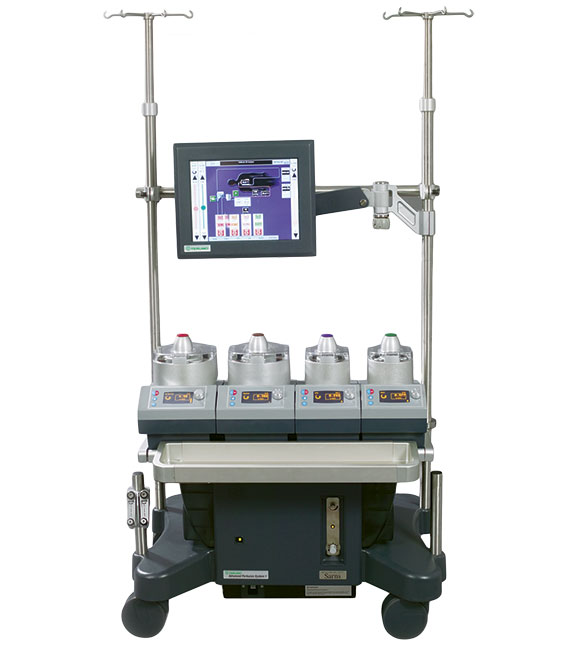Troubleshooting Terumo Heart-Lung Machines: Critical Issues

Critical troubleshooting guide for Terumo heart-lung machines covering emergency procedures, system diagnostics, and safety protocols.
Troubleshooting Terumo Heart-Lung Machines: Critical Issues
Heart-lung machines are life-support systems used during cardiac surgery to maintain circulation and oxygenation. This comprehensive guide addresses critical troubleshooting scenarios for Terumo heart-lung systems, focusing on immediate response protocols and systematic problem resolution.
System Overview
Terumo heart-lung machines integrate multiple critical subsystems including blood pumps, oxygenators, heat exchangers, and monitoring systems. Each component must function flawlessly to ensure patient safety during cardiopulmonary bypass procedures.
Critical Issue Classification
| Priority Level | Issue Type | Response Time | Examples |
| CRITICAL (Code Red) | Life-threatening malfunction | Immediate (<30 seconds) | Blood pump failure, oxygenator rupture |
| HIGH (Code Orange) | System performance degraded | <2 minutes | Pressure fluctuations, temperature drift |
| MEDIUM (Code Yellow) | Non-critical alarms | <5 minutes | Flow sensor errors, display malfunctions |
| LOW (Code Green) | Maintenance indicators | Scheduled service | Filter replacement, calibration due |
| Location | Normal Range | Critical Limits | |
| Venous Line | -50 to 0 mmHg | <-80 mmHg | |
| Pre-Pump | -30 to +20 mmHg | <-50 mmHg | |
| Arterial Line | 50-300 mmHg | >400 mmHg | |
| Oxygenator | <100 mmHg | >150 mmHg |
Leak Detection Protocol:
1. Visual inspection of all connections
2. Pressure hold test (maintain pressure 5 minutes)
3. Bubble test at critical joints
4. Blood level monitoring in reservoirs
5. Continuous pressure trend analysis
Air Bubble Management
Air Detection Systems:
- Ultrasonic bubble detectors on arterial line
- Venous reservoir level monitoring
- Manual visual inspection protocols
- Emergency air removal procedures
Bubble Removal Procedure:
1. Stop arterial pump immediately
2. Clamp arterial line
3. Prime air from circuit
4. Verify complete air removal
5. Resume perfusion carefully
Advanced Diagnostics
Flow Measurement Verification
Ultrasonic Flow Meter Testing:
1. Check transducer alignment on tubing
2. Verify acoustic coupling gel application
3. Test flow meter against known standard
4. Calibrate zero flow baseline
5. Validate accuracy at operating flow rates
Mechanical Flow Measurement:
- Timed collection method for verification
- Gravimetric analysis for accuracy
- Temperature correction factors
- Viscosity compensation calculations
Pressure Transducer Calibration
Calibration Standards:
- Use certified pressure source (±0.1% accuracy)
- Test at 0, 100, 200, 300 mmHg
- Verify linearity across full range
- Check zero drift over time
- Document calibration results
Data Logging and Analysis
Critical Parameters to Monitor:
- Blood flow rates (venous and arterial)
- Pressures at all monitoring points
- Temperature (blood and water)
- Gas flows and compositions
- Pump speeds and power consumption
- Alarm activations and responses
Safety Precautions
⚠️ CRITICAL SAFETY REQUIREMENTS
- Maintain sterile technique throughout all procedures
- Never leave patient unattended during bypass
- Keep emergency backup systems immediately available
- Test all safety alarms before each procedure
- Follow hospital protocols for cardiopulmonary bypass
- Ensure adequate blood bank support is available
- Maintain direct communication with surgical team
- Have manual backup procedures ready for all automated functions
Preventive Maintenance
Daily Preparation
- Complete system self-test and calibration
- Verify all alarm functions
- Check emergency equipment readiness
- Review patient-specific protocols
- Confirm blood product availability
Weekly Maintenance
- Deep clean all external surfaces
- Calibrate pressure monitoring systems
- Test emergency power backup
- Inspect tubing and disposables inventory
- Update maintenance logs
Monthly Service
- Complete flow measurement verification
- Service mechanical pump components
- Test gas analysis systems
- Calibrate temperature controllers
- Review incident reports and trends
Quarterly Overhaul
- Major system calibration verification
- Component replacement per schedule
- Software updates and validation
- Staff training and competency testing
- Emergency drill simulation
Quality Assurance
Performance Metrics
Track these parameters for quality improvement:
Patient Safety Indicators:
- Zero tolerance for air embolism events
- Temperature excursions <1% of procedures
- Blood loss from circuit leaks <50 mL
- Emergency equipment deployment readiness
System Reliability Metrics:
- Uptime percentage during procedures
- Mean time between failures (MTBF)
- Component replacement frequency
- Calibration drift patterns
External References
1. Terumo Cardiovascular Systems Service Manual HLM-7000 Series (terumo-cvs.com/support)
2. FDA Heart-Lung Machine Safety Guidelines (fda.gov/medical-devices/cardiovascular)
3. OSHA Healthcare Electrical Safety Standards (osha.gov/healthcare/electrical-safety)
*Last Updated: November 9, 2025*
*Reading Time: 8 minutes*
---
⚠️ Important: This guide summarizes safe repair practices based on industry best practices and manufacturer guidelines. Always consult the official manufacturer manual for model-specific procedures. Medical equipment repair should only be performed by qualified personnel.